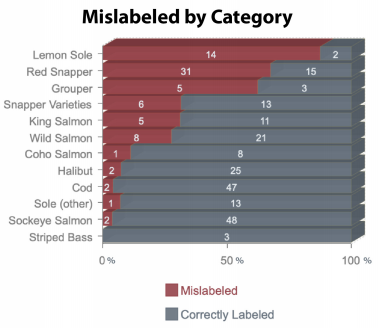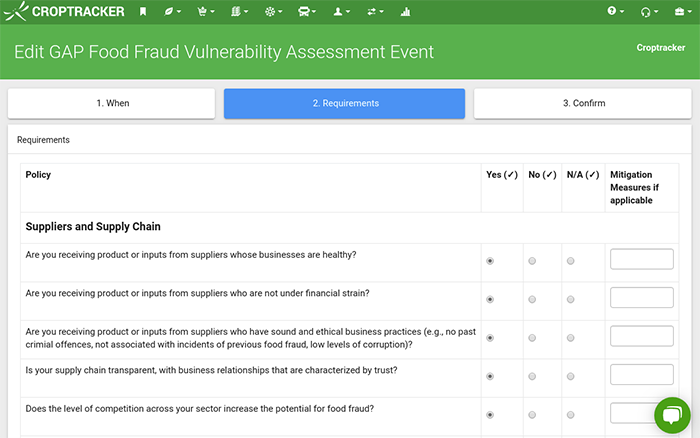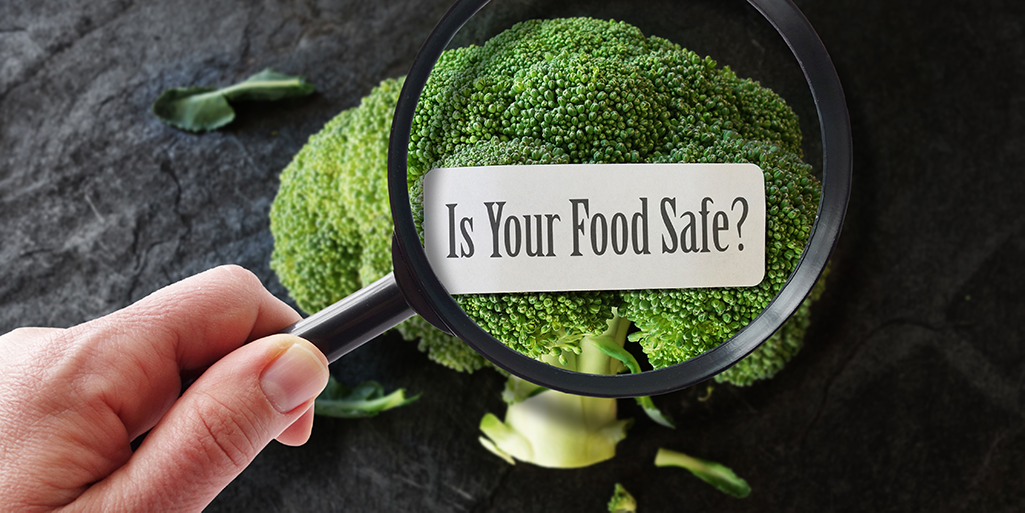One of the biggest issues plaguing the food industry today is food fraud, defined by the Canadian Food Inspection Agency as the “the misrepresentation or adulteration of a product for economic gain”. Food fraud exists across a huge variety of food markets, from fresh produce to processed food items, condiments, fish, and even spices.
Food fraud includes the deliberate mislabelling, substitution, or tampering with food or food packaging, typically for economic gain. It comes in many forms: conventional fruit and vegetables being sold as organic produce, ingredients being covertly swapped out for cheaper substitutes, foreign produce being labelled as domestic, even best-by dates being tampered with to sell expired products. A growing issue around the world, in 2019 the Canadian Food Inspection Agency (CFIA) estimated that food fraud is costing the global food industry up to $15 billion per year. Food fraud can occur at any number of points along the supply chain, and is believed to affect 10% of commercial food products around the world. Traceability is one pathway to ensuring the authenticity of food products.
- Substitution: A product with something different, that is often inferior, i.e. using horse meat instead of beef, or labelling pollock as cod.
- Adulteration: A food product by mixing in other ingredients or elements and passing it off as a pure product. This can also include undisclosed dilution, with prominent examples including adding sugar syrup to honey, adding sunflower oil to olive oil, adding fillers to ground spices, or adding apple juice to pomegranate juice.
- False claims and misleading statements: Misleading consumers on the benefit of a food product, i.e. food products marketed as being "clinically and scientifically proven to boost the immune system."
- Mislabelling: A food described as something it is not, or false declarations of a country of origin, i.e. labelling commercially farmed salmon as wild salmon, labelling apples as organic when they are not certified, labelling tomatoes as a "Product of Canada" when they are from another country, or providing a false net quantity declaration.
Consumer Concern
In a 2019 report from the Canadian Centre For Food Integrity (CCFI) 91% of Canadian consumers reported strong concerns about food fraud. At best, someone buying fake organic food pays a premium for no reason, and at worst a person who buys the olive oil diluted with peanut oil may suffer a life-threatening allergic reaction. But some commodities are at a greater risk than others.
Fish
Mislabelling and substitution affects nearly every commercial variety of seafood. In 2018 a New York state Attorney General’s office investigation found that more than 25% of seafood tested was mislabeled. While some species of fish are more at risk, mislabelling and substitutions were found in “virtually every tested seafood category”. The top offenders? Lemon sole, red snapper, and grouper were the most likely to be substituted, sometimes with a completely different species of fish.

From the 2018 New York state Attorney General’s office FISHY BUSINESS: SEAFOOD FRAUD AND MISLABELING IN NEW YORK STATE SUPERMARKETS
Spices
One of the top 5 most common targets for food adulteration are spices; they’re expensive, heavily processed before sale, and often sold by weight. A 2019 report in the Journal of Public Health Management and Practice found that, out of a total of 1496 samples from 41 countries, more than 50% of samples had detectable lead, and more than 30% contained a lead concentration greater than 2 parts per million. To contextualize this, according to the FDA the maximum allowable amount of lead in candy in the US is 0.1 parts per billion, or 0.0001 parts per million. While the lead concentration in spices purchased outside of North America was significantly higher, many of the American samples tested still had a lead levels exceeding 2ppm, and up to 20ppm in the cases of vulnerable spices like curry and turmeric, where pigments are frequently added to boost the colour and weight of products.

Organic Produce
Organic produce is another of the top food products at risk for food fraud, and the problem is only expected to get worse as the global organic market continues to surge in growth. Consumers pay more for organic produce, so false organic labelling and documentation is a prime target for price fraud. In 2018, over 36 million pounds of non-organic soybeans were sold in US stores with organic labelling at organic prices, and numbers are still on the rise. Organic food fraud doesn’t just impact consumer wallets though, consumers with pesticide or chemical allergies can be at risk of a life threatening reaction.
Traceability: The Best Defence Against Food Fraud
As the threat of food fraud and consequent demand for traceability continue to increase, produce growers - especially those of particularly vulnerable foods like organic fruit and vegetables - should ensure that their records are kept accurate, thorough, clearly-organized, and easily-accessible for food safety audits.
In particular, organic growers should be able to:
- Prepare detailed, accurate spray records for conventional and organic lots
- Show that only organic produce was packaged in organic-labelled packaging
- Show that the produce from the organic buffer area - the outside rows of an organic field - are packaged and labelled as conventional produce, not organic produce
For GlobalGAP certification, growers are required to perform a food fraud vulnerability risk assessment “to identify potential vulnerability to food fraud (e.g. counterfeit PPP or propagation material, non-food grade packaging material)”. A food fraud mitigation plan must also exist and be available to be implemented on inspection.

In order to simplify the process, CanadaGAP has released Form U, the Food Fraud Vulnerability Assessment, whose mandatory completion shows an operation’s due diligence and awareness of food fraud. In addition to Croptracker’s robust traceability tools, users can access and fill out digital copies of CanadaGAP forms to record assessments right in Croptracker.
Croptracker's most powerful traceability tool is found in its Mock Recall report. For global GAP certification, farms are required to maintain a documented identification and traceability system that can be traced back to the registered farm, and forward to the immediate customer, and to develop a crisis management plan in the event of a recall. The Mock Recall report collects data from all of your harvest, storage, spray, packing, and shipping events to create a complete picture. You'll know where it came from, who picked it, where it was packed and stored, and where it was shipped. Generate the report by entering the pack lot number from any packing event to see all information associated with it, all the way from the beginning point of harvest.
The threat of food fraud will not diminish any time soon, but growers can take steps to protect themselves, with organized traceability records, and consumer trust.
Interested in learning more about Croptracker? Learn more about our Farm Management Software, or book a demonstration to schedule a meeting with our product experts. Or if you liked this article, subscribe to our monthly newsletter!
And as always, if you're ever stuck, never hesitate to e-mail us at support@croptracker.comor Live Chat with us by clicking the green speech bubble ![]() in your bottom right-hand corner. We're always happy to help, so Croptracker can make your farm more efficient, safer, and more profitable!
in your bottom right-hand corner. We're always happy to help, so Croptracker can make your farm more efficient, safer, and more profitable!


